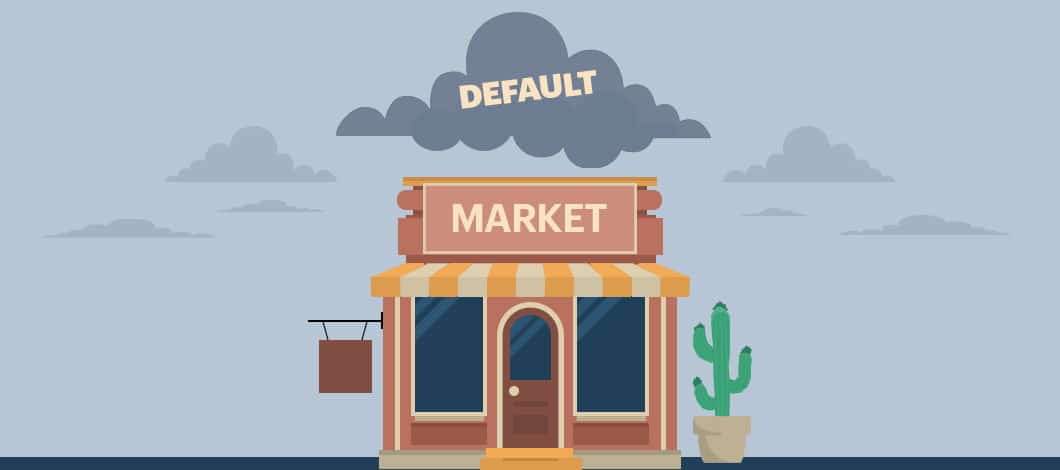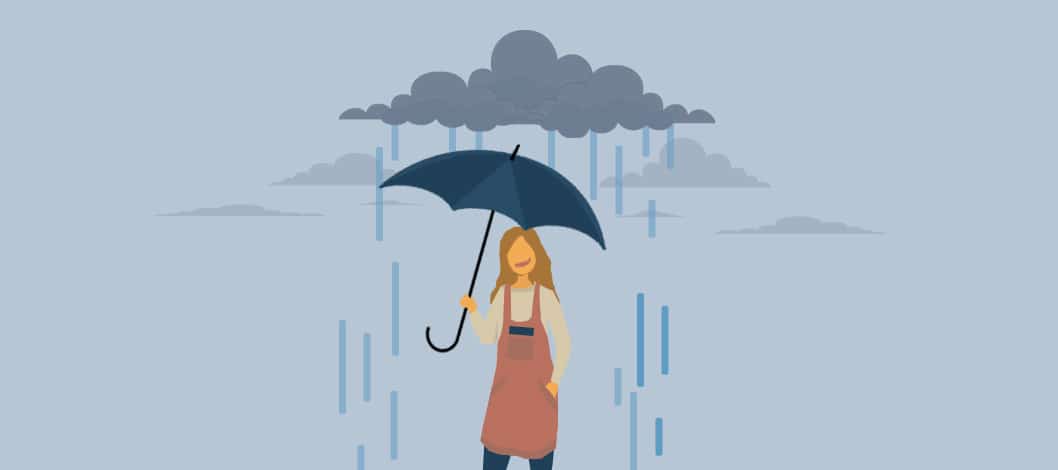Business loan default can result in serious consequences for your finances.
Here’s how it can affect you and what you can do to recover.
What Does It Mean to Default on a Loan?
A loan default is a failure to pay back a loan according to the scheduled terms of your agreement.
Depending on your loan arrangement, you can enter into default status upon missing a scheduled payment or after a grace period has expired. With many loan arrangements, if you’re late on a payment, your loan enters a period known as delinquency for a number of days, weeks or months before it goes into default status.
Once you default on your loan, your lender can begin taking steps to recover what you owe them. Depending on the terms of your loan, these steps can include claiming your collateral or seizing personal assets.

What Happens If You Default on a Business Loan?
Bank loan default consequences vary depending on a number of considerations. One is your lender’s policy. Larger lenders may make more effort to reach out to you and give you an opportunity to catch up on payments before treating your loan as in default. Smaller lenders, who are more heavily impacted by loan defaults, may pursue collection more aggressively.
Once your loan is considered to be in default, your original payment schedule no longer applies and you become responsible for paying your entire balance, plus additional penalties in some cases. At this point, one of several things may happen. Indeed, your lender:
- Allows you to negotiate a repayment plan
- Lets you to settle your debt with a partial repayment
- Begins legal action to seize your collateral or assets to repay your debt
What Happens If Your Lender Takes Collection Action?
What happens in the last scenario depends partly on whether the loan is secured by collateral. If you put up the collateral to secure your loan, your lender can claim a lien on your loan and repossess it. For example, if you put up your company’s building as collateral, your lender could seize control of the property and sell it to repay the loan.
If your loan was unsecured by collateral, you probably had to sign a personal guarantee as a condition of your loan. In this case, your creditor may file a court claim to seize and sell your personal assets to repay your debt.
What action your creditor takes may depend on the size of your debt. If your debt is small enough that your lender can pursue action in small claims court, they may go that route. However, if it’s larger and they think you have enough to repay it, they may take you to civil court. If they don’t think you have enough to repay it, they may decide it’s not worthwhile to pursue.
Credit Score Consequences
Loan default consequences also impact your credit score. Business loans appear on your business credit report, so late payments and defaults lower your business credit score. If you’re a sole proprietor, if your loan was backed by a personal guarantee or if you have to declare personal bankruptcy as a result of your default, defaulting can lower your personal credit score as well. Loan defaults stay on your credit report for up to 7 years, according to credit reporting company Experian.
What Happens If You Default on SBA Loan Terms?
Small Business Administration (SBA) loan default procedures can involve government agencies as well as your lender. Once you enter default, your lender can seek to recover your debts by seizing any collateral you put up. If you put up both business collateral and a personal guarantee, business collateral will be sought first. If your business collateral and personal guarantee both prove insufficient to cover your debt, your lender will turn your case over to the SBA.
The SBA will first reach out to you with a letter demanding payment within 60 days. If you respond and you can’t pay, the SBA may allow you to arrange a compromise payment plan called an offer in compromise. If you simply fail to respond, the SBA will turn your case over to the U.S. Treasury Department, which can take actions to collect debt such as garnishing your wages or withholding tax refunds.
How Can You Avoid a Business Loan Default?
A first line of defense against default is pre-emption.
- Develop a financial cash-flow plan for paying off your loan before you enter into any borrowing agreements.
- Choose your lender and loan terms carefully. When possible, protect your personal finances by using collateral or limiting the language of your personal guarantee instead of agreeing to an unlimited personal guarantee.
- Have a qualified financial or legal adviser review your loan agreement with you before you sign anything so that you understand the implications of what happens if you default.
Consider Refinancing
If you find yourself at risk of default, there are a number of steps you can take. One is to develop a financing strategy to enable you to keep up with your payments.
For example, you may be able to refinance your loan, which involves taking out a new loan to pay off your existing loan. Refinancing is sometimes used to reduce interest payments, but it can be used to avoid default.
For instance, if you run a business that relies on extending customers credit, you may be able to use unpaid invoices as collateral to obtain a loan or line of credit, a financing strategy known as invoice financing.
Seek to Negotiate with Your Lender
If you still can’t find a way to meet your loan payments on time, you should contact your lender as soon as possible and discuss your situation with them. They may be willing to negotiate a payment strategy that allows you to continue making payments while avoiding default. For example, they may agree to decrease your rates, allow you to make interest-only payments or adjust your loan terms to facilitate repayment.
Whatever you do, don’t simply fail to make payments without contacting your lender. Doing this will make your lender less favorable to negotiations and more likely to treat your account as default and take collection action.

How Can You Recover from Loan Default?
Recovering from a loan default is never a painless process, but there are steps you can take toward recovery. In a best-case scenario, negotiating with your lender or their debt collector may allow you to avoid the full brunt of default.
In a worst-case scenario, you may be able to file for business bankruptcy protection or personal bankruptcy. Different types of bankruptcy filings enable you to repay your debt through asset sales, reorganize your business so you can repay your debt or arrange to make repayments on an installment plan. If you’re considering filing for bankruptcy protection, talk to an attorney about your options.
If you miss a loan payment, default on a loan or declare bankruptcy, your business or personal credit score or both will be lowered. You can improve your score over time by taking steps such as paying bills on time and keeping account balances low. Monitor your credit report periodically to make sure any inaccurate or outdated default information has been removed. You can contact credit reporting companies to dispute incorrect items.
Don’t Let a Loan Default Disrupt Your Finances
A loan default happens when your payments go delinquent long enough that you are considered to have stopped repaying your loan. Depending on the terms of your loan agreement, your lender may seize your collateral or even your personal assets. In addition to forfeiting collateral or assets, you can suffer damage to your business and personal credit rating.
You may be able to avoid loan default by taking steps such as:
- Cash-flow planning
- Asking your lender to extend your grace period
- Arranging emergency financing
Should you do go into default, you may be able to:
- Negotiate a payment plan
- Make a partial payment with your lender
If you’re seeking ways to stay out of loan default, we may be able to help you find emergency financing. Take a few minutes to fill out our free, no-obligation online prequalifying application and find out instantly what types of financing may be available to you.










